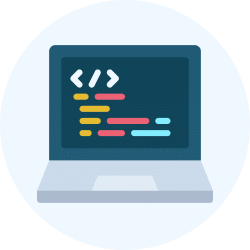Software Development Exam > Software Development Videos > Complete Linux Course: Become a Linux Professional > Linux Command Line Tutorial For Beginners 28 - Head and Tail Commands
Linux Command Line Tutorial For Beginners 28 - Head and Tail Commands Video Lecture | Complete Linux Course: Become a Linux Professional - Software Development
FAQs on Linux Command Line Tutorial For Beginners 28 - Head and Tail Commands Video Lecture - Complete Linux Course: Become a Linux Professional - Software Development
| 1. What is the purpose of the "head" command in Linux? |  |
Ans. The "head" command in Linux is used to display the first few lines of a file or standard input. By default, it displays the first 10 lines, but you can specify a different number using the "-n" option. For example, "head -n 5 file.txt" will display the first 5 lines of the file.
| 2. How can I use the "head" command to display the contents of a file in reverse order? |  |
Ans. The "head" command is not designed to display the contents of a file in reverse order. For that, you can use the "tail" command with the "-r" option. For example, "tail -r file.txt" will display the file's contents in reverse order.
| 3. Can I use the "head" command to display the last few lines of a file? |  |
Ans. No, the "head" command is specifically used to display the first few lines of a file. If you want to display the last few lines, you should use the "tail" command. By default, it displays the last 10 lines, but you can specify a different number using the "-n" option.
| 4. How can I use the "head" command to display the contents of multiple files together? |  |
Ans. To display the contents of multiple files together using the "head" command, you can specify the files as arguments. For example, "head file1.txt file2.txt" will display the first few lines of both files. By default, it will display the first 10 lines of each file.
| 5. Is it possible to use the "head" command to display the contents of a file without the header line? |  |
Ans. Yes, you can use the "head" command with the "-q" option to display the contents of a file without the header line. This is particularly useful when working with files that have a header line that you want to exclude from the output. For example, "head -q -n 5 file.txt" will display only the first 5 lines of the file, excluding the header line.
Related Searches















